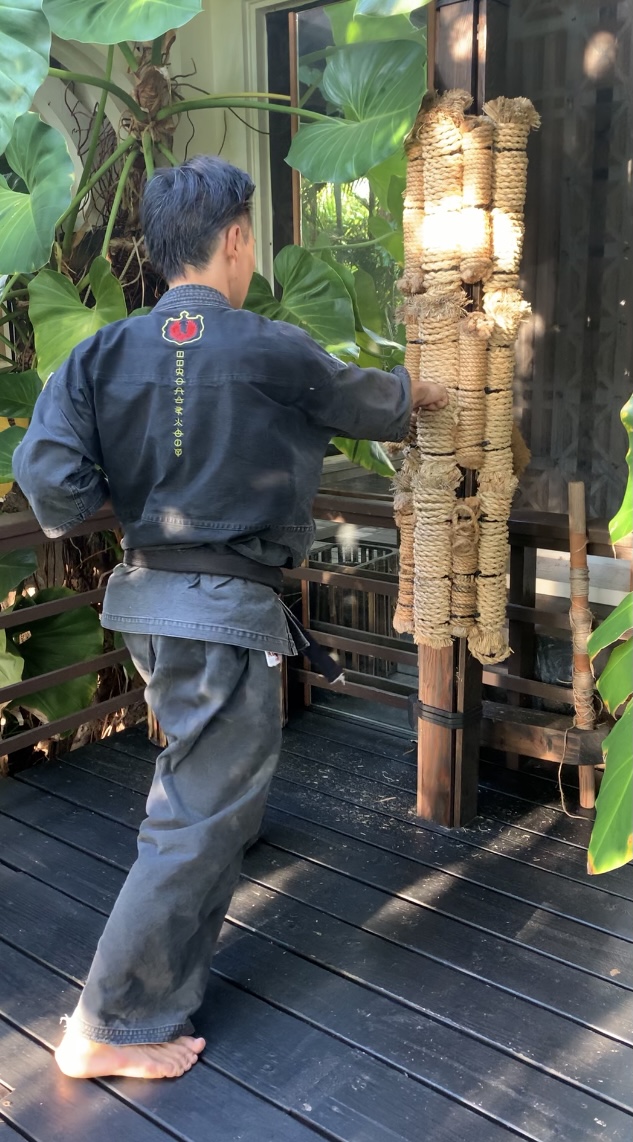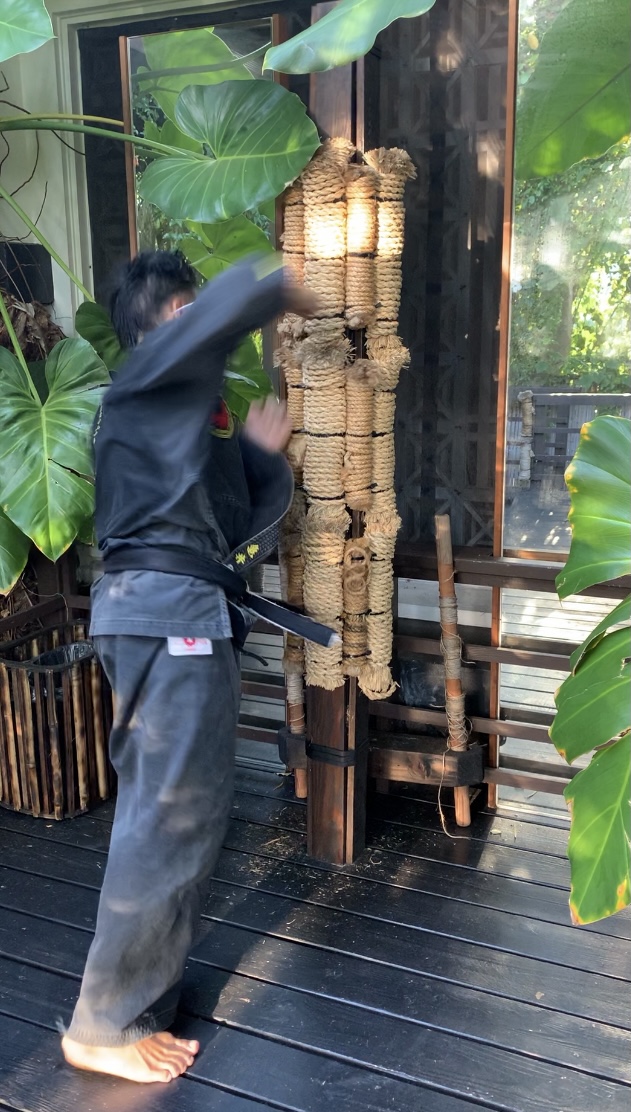20。What is freedom in Bushido?
What is freedom in Bushido?
One of the questions I get asked by many people these days is about how they feel confused by or have trouble dealing with people's claims of diversity.
It is wonderful for people to be free and happy, and prosperous while maintaining their "differences" and diversity.
However, when individuals become too assertive in this regard, mutual acceptance becomes unacceptable, and coexistence becomes impossible.
We are now witnessing that this will take the form of even stronger individual assertion of rights, forcing people to change. which is not the way forward for a strong and healthy society.
One of reason why differences and diversity, inevitable in the world but especially Japan which have existed in the culture since ancient times, are now becoming a social problem, and preventing people from being in harmony, may be because all claims of freedom are based on western style free thought concept.
The Western type of thought is basically based on the idea of dualism. This is the thought that emphasizes the visible world (objective or concrete physics), separating matter or event on the concept of two choices, even separating the self from the others.
In Japan, this Western-style dualistic liberal ideology has taken root in the form of “postwar democracy”, so Japan is un-knowingly based on the liberal ideology that came from the West.
By dividing oneself and others into two choices based on dualism, it is you versus the other party, which makes it difficult to consider the other party because, people naturally become more concerned with oneself and less concerned with the other person. It is no secret that the number of such people is increasing these days. Even in Western societies, the lack of respect among people today is said to be a problem, for respect based on harmony is difficult to achieve based on the dualistic philosophy.
In the end, there is no harmony even if one cries out for diversity and individualism, and a comprehensive society is created in which disparate ideas are forcibly integrated and regulated by rules and laws. The result will be a controlled society that is regulated by the ruling body, ultimately people will lose their true freedom if only the Western-style freedom philosophy is practiced.
Freedom in Bushido, the fundamental spirit of Japan, is based on monism, which includes invisible (metaphysical) world of Yin and Yang and emphasizes the unity of the inner space (private), which belongs to yin, and the public space, which belongs to yang. This yin yang aspect is harmonized to considering the harmony of others and the whole, not oneself.
This expression of freedom comes with respect, reverence, and courtesy based on the "kata" of manners.
In Bushido, one of the roots of Japanese thought, respect, courtesy, and modesty are embodied in the kata called Saho, and the kata (form) of body art as a martial art is used broken down in actual combat to be practical. In the same way, in actual society, one should always be in harmony with others while respecting the basic manners and keeping oneself in harmony by breaking them down somewhat depending on the occasion.
This is also in line with Japanese philosophies such as "courtesy even amid familiarity" and "wabi and sabi. Those who do not know the pattern of manners and courtesies are too disruptive and cause inconvenience to others because they do not have the original standing and form, but when they know these basics, respect for others automatically manifests itself.
In other words, for the Japanese, freedom is essentially embodied in kata (form and shape) that represent monism that makes harmony possible. Japan has long been based on such a fundamental idea, which has enabled a society in which all kinds of colorful diversity have been well integrated. Therefore, especially the Japanese influencers who talk about freedom and rights, should review their own culture and spirituality, and will find that harmonious freedom is the result.
If we are to pursue freedom in the future, it is important for the Japanese people to review their own unique freedom based on Bushido and create a happy society where everyone is united and functions spontaneously. The Bushido-style freedom philosophy, invoking the oneness would have a positive effect to today's chaotic world.

20。武士道での自由とは
武士道での自由とは
最近多くの人々から質問を受けることは、人々の多様性に関する主張に困惑を感じることや、その場合の接し方に困っているという事についてです。
人々が「違い」や多様性を保ちつつ、自由で幸福に栄えることは素晴らしいことです。しかしこれに伴う個人の主張が激しくなれば、お互いの容認ができなくなり共存できない結果が生まれてしまいます。それはさらに強い個人の権利の主張と言う形になり、“周りの人々が変わる事”を強要する様なことは、健全な社会の進む道ではない事を私たちは今日目の当たりにしています。
世界に於いて仕方ないにしても、特に日本に於いては伝統的に昔からあった違いや多様性がなぜ今になって社会問題になり、人々の和合を阻んでしまうことの理由として、全ての主張が西洋型の自由思想に基づいているからではないでしょうか。
西洋型の思想は基本的に二元論と言う思想に基づき、目に見える世界(形而下)を重視し、もの事を二択で選択する観念に基づき自分と相手を分けて考えた上で、自分という個人を第一に顧みます。日本に於いては戦後民主主義という形でこの西洋型の二元論による自由思想が根付いていますので、日本は知らずの内に西洋から来た自由思想に基づいていると言うことを多くの日本の人は考えもしないことだと思います。
二元論の思想で自分と相手を二択で分けることで自分対相手となることから、相手を考慮することが難しくなりますが、最近ではこの様な人が増えているのは周知の事です。欧米社会でも現代人のリスペクトの欠落が問題にされますが、この二元論の思想の上で和合に基づくリスペクトは難しいのです。その上で多様性や個人の主張を叫んでもそこには結局和合はなくなり、無理矢理にルールや法律で規制するというバラバラの思想が統合された形だけの総合社会ができてくるのです。その結果、大元で規制される管理社会になっていきますが、結局のところこの欧米型の自由思想では人々は本当の意味の自由を失う事になるでしょう。
日本の根源的な精神である武士道による自由とは陰と陽など目に見えない場(形而上)の空気を知り、陰に属する奥の間(プライベート)と陽に属する公の場を分けつつも、それが一つで和されている事を重視する一元論の上にあります。自分ではなく他人や全体の和を考えて自由を、尊敬、謹み、礼儀を作法と言う「型」の上で表現することです。
日本思想の根源の一つである武士道では、尊敬、礼儀、慎みを作法という型で体現し、武術としての体術の型を実戦で多少崩して使用します。これと同じように、実際の社会の中では基本的な作法を大切にしつつ、場に応じて多少崩して自分を保ちつつ常に皆と和合することです。これは「親しき中にも礼儀あり」、「わび・さび」などの日本流の哲学にも通じます。作法や礼儀などの型を知らないと自分の元の立ち位置や形がないことから、崩し過ぎて他人に迷惑を被らせますが、この基本を知っていると自動的に他人への敬意が現れます。
つまり本来、日本人にとって自由は和合を可能にする一元論を表す型(形・かたち)をもって体現するものなのです。日本は古来からこの様な根源思想に基づくことで、色とりどりのあらゆる多様性が上手く溶け込んだ社会が実現していました。なので、日本の文化人も自由と権利を語るなら独自の文化と精神性を見直す事で、和合された自由と共存が結果として出てくる事を感じられるでしょう。
これからの時代に自由を追求するなら、日本人は自分たち独自の武士道による自由を見直し、自発的に機能する皆が一つになった幸せの社会を創作していく事が重要です。そして武士道型の自由思想はワンネスを呼び起こすことで、今の混乱した世界にも恩恵を与えるのではないでしょうか。

19。Good social skills born from harmony
Good social skills born from harmony
Not only is it possible to practice effectively when everyone of all ages mixes together, but learning this sense of harmony will also help you grow into a person who is polite, proactive, and attentive to others socially.
There seems to be a variety of ideas about the meaning of "freedom" nowadays, as some people think that formalities are hierarchical and strict, or that people should be “freer”.
There is a tendency, especially among recent cultural figures, to advocate a privileged freedom, and it seems that it is now fashionable for many people to advocate since of entitlement from free spirit equality etc. Even in schools these days, it seems that these are taught, without teaching the necessary elements needed to generate these phenomena.
However, freedom and equality are not something that can be obtained simply by making decisions and laws. It comes with effort from every individual. Bushido teaches us that, we must be attentive, caring and being mindful respecting others, to obtain real freedom. And instead of forcefully making declaration on equality, respecting the differences is what makes people to be truly equal.
If the freedom is misconceived, we will not be able to coexist, and on the contrary, conflicts will increase, and society will become confused. There is even a danger that a society that pretends to be free, such as a controlled society, will be created along this line of thought, resulting to people losing their true freedom.
True freedom is a upgraded freedom that can only be achieved through the individual efforts, is what the bushido teaches us.
Thorough martial arts, we learn that true freedom is born from harmony, and that this requires individual efforts to respect formality, which is the spirit needed to form a good society in the future. This is an important reason why our dojo, which emphasizes learning the spirit of harmony, emphasizes formality.
19。調和から生まれる良い社会性
調和から生まれる良い社会性
皆が混じり合うことで効果的な練習ができるのは勿論、この感覚を身につけることで社会的にも、礼儀正しく先を読んで人に気を配る事ができる大きな人に育つ助けになります。
古典的武道の形式はヒエラルキー(段級)的で厳しいとか、もっと自由であるべきだと考える人がいるように、「自由」と言う意味については現在では様々な考え方があるようです。最近の文化人を中心に西洋式で特権的な自由を謳う風潮があり、今では多くの人が様々な主義主張をすることが流行している様に見受けられ、最近の学校でも、個人の自由の権利について教えてもその為に必要な要素は教えない様です。
しかし、自由と平等は、決め事や法律を作るだけで得られるものではありません。一人一人の努力で得られるものです。武士道は、本当の自由を手に入れるためには、気配り、思いやり、そして他人を尊重する心を持たなければならないことを教えてくれます。
そして、強引に平等を宣言するのではなく、違いを尊重することが本当の意味での平等につながるのです。そこをはき違うと皆が共存できなくなり、逆に争い事は増えて社会が混乱してしまうこともあるのです。もし社会がその路線上に陥るなら、その時は管理社会のような様な自由があるように見せかけた社会が作られ、人民が本当の自由を失う社会に向かってしまう危険性すらあります。
真の自由とは、一人一人の個人的な努力があって初めて達成できるとても次元が高いものなのです。武士道では、真の自由は調和から生まれ、その為には形式を重んじる個人の努力が必要になる事を学びます。これを体感で覚える事は、これからの良い社会を形成するのに必要な精神です。これは調和の精神を学ぶことを重んじる当道場が形式を重視する大切な理由です。
18。Social skills of "harmony" acquired through martial arts
Social skills of "harmony" acquired through martial arts
The dojo is a place where you learn to find harmony in formality. In the dojo, people of all ages, from children to adults, practice together, but when everyone practices together to produce results, overall harmony is necessary. For this purpose, emergent harmony is possible only within the rules of "formality. This is the discipline of Bushido.
These formalities include etiquette and behavior, the orientation of shoes at the entrance, and the "place" of the dojo, which is the awareness of Kamiza and Shimoza. These formalities establish the discipline in the space.
For this reason, within the space of the dojo, we place great importance on the greetings and replies we exchange with each other, and the courtesy with which we care for others. Through the relationship between seniors and juniors, the elders watch over the younger ones, and the younger ones respect the elders. Through this, even the most mischievous children learn to adjust to the atmosphere in the dojo, learn to be respectful, and have time to realize their own potential.
By not separating children and adults, there is a sense of fellowship, not only between seniors and juniors, but also a sense of respect from children to adults and advocacy from adults to children. This harmonious time also fosters the spirit of bushido, where the atmosphere of the dojo is tightened by the difference in rank and age.
This harmonious way also lends itself to effective practice. Many of our predecessors have pointed out that children and adults can improve quickly by mixing with others, and that advanced member can improve even more by teaching children. Since the amount of practice is spread evenly throughout the class, everyone is able to get warmed up, and the adults' and dan members' practice after the children leave becomes more successful is added benefit.
With this dojo harmony, even the youngest students are able to practice with a sense of responsibility, and everyone in the dojo can be seen practicing well.
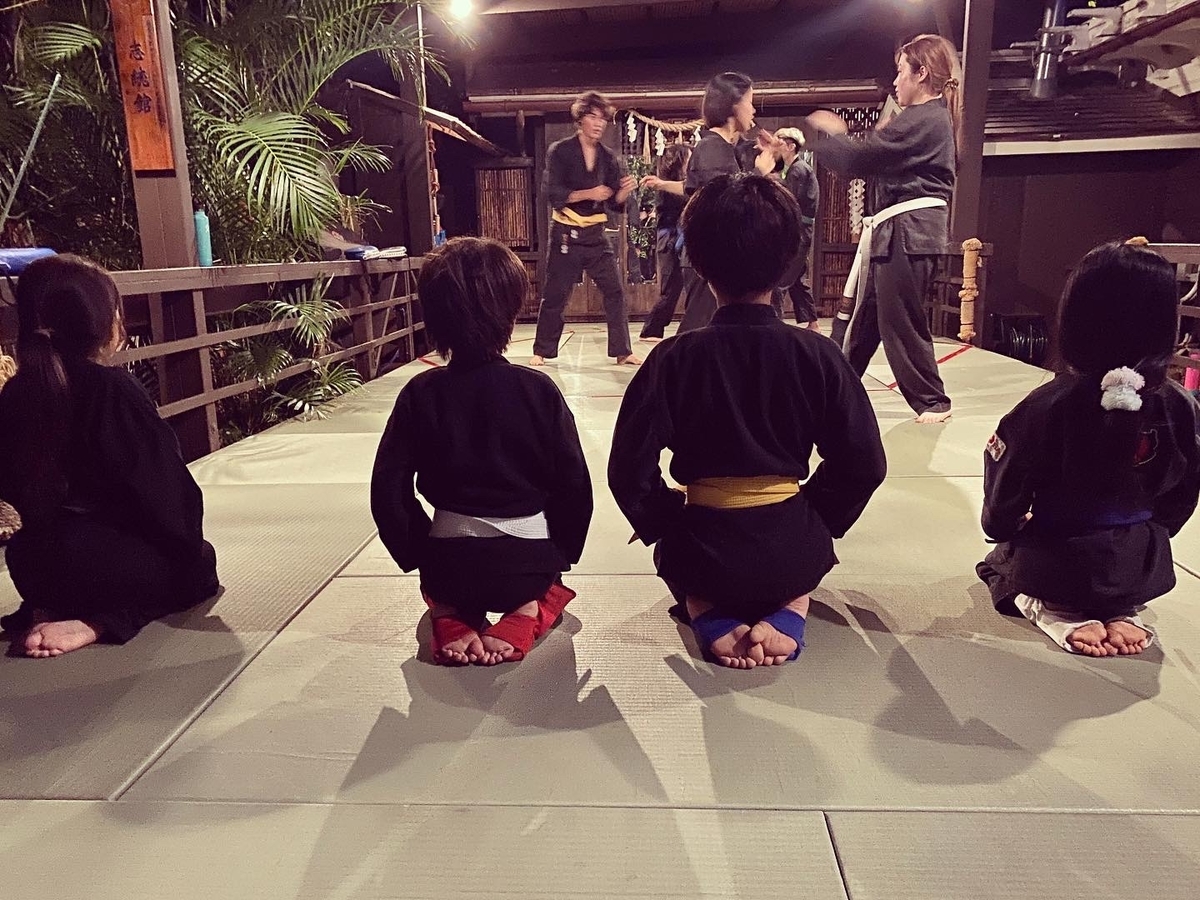
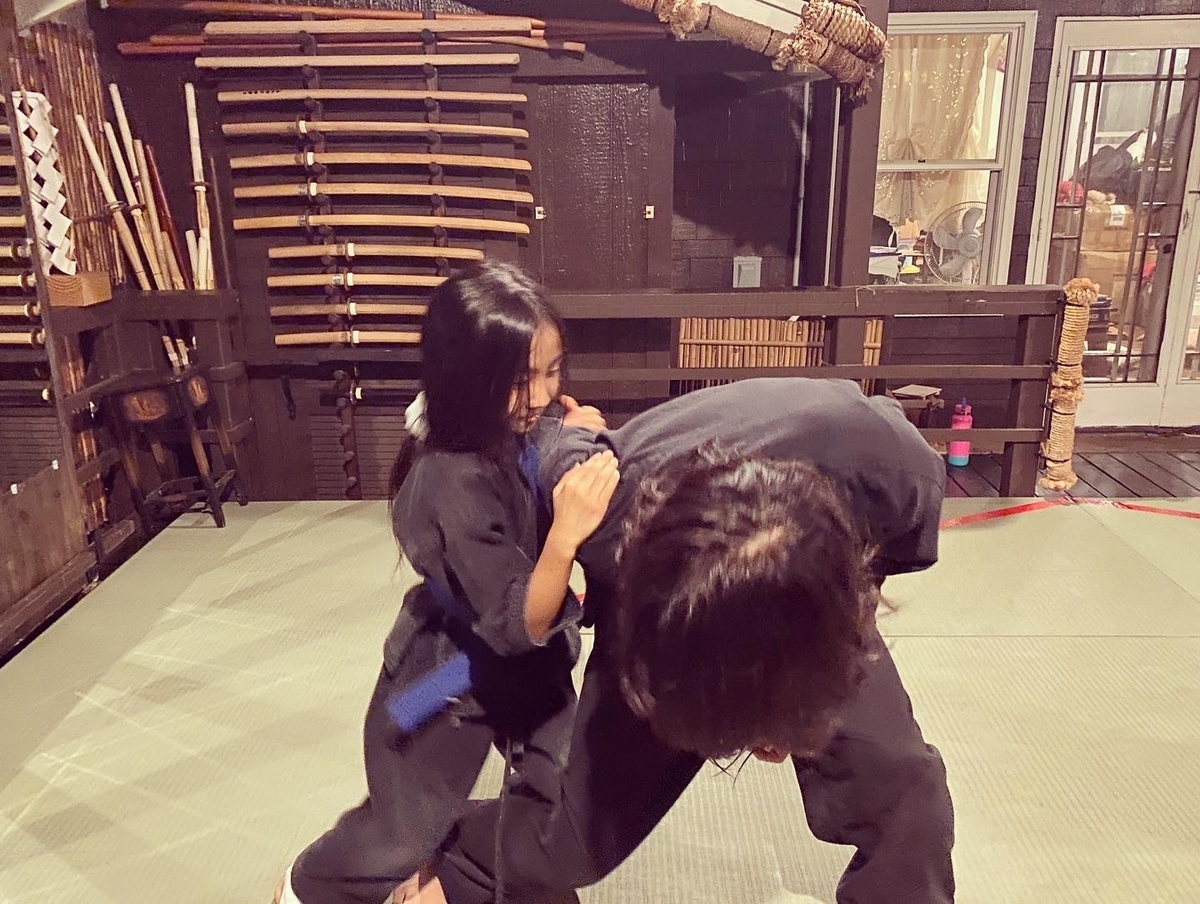
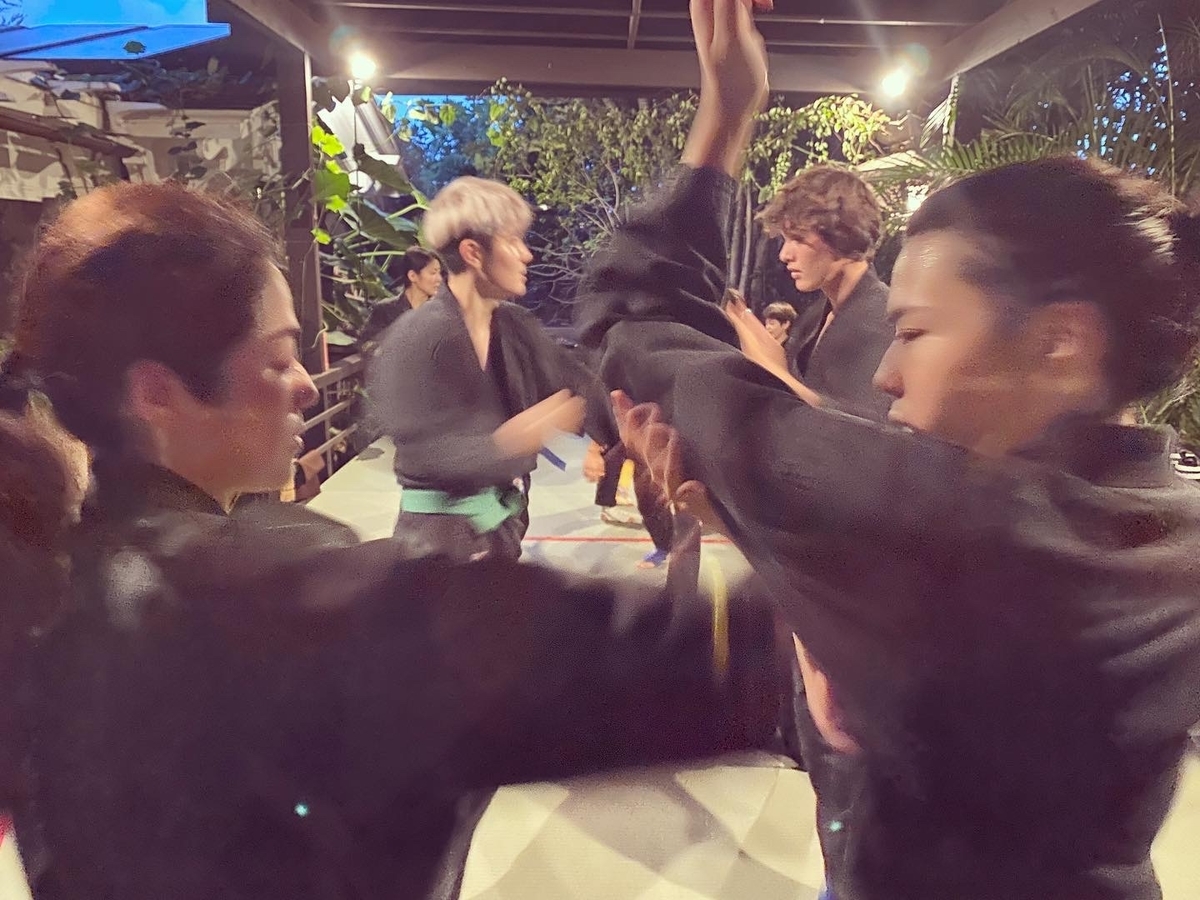

18。武道で身につく「調和」の社会性
武道で身につく「調和」の社会性
道場は形式の中に和があることを学ぶ場です。
道場の中では、子供から大人まで様々な齢の人々が一緒に練習するのですが、成果が出る練習を皆で行うとき、全体的な調和が必要になります。このためには「形式」という決まり事の中でこそ創発的な調和が可能になります。 これが武士道の規律です。
その形式とは、礼儀作法や立ち振る舞い、入り口で靴の向きを整えること、道場の上座(かみざ)と下座(しもざ)を意識する空間の「場」においての作法の事です。これら形式によってその空間に秩序が成立します。
このため、道場の空間の中では、お互いに交わす返事や挨拶、相手を気遣う礼儀を重んじます。先輩や後輩の関係性を通して年長者は年少者を見守り、年少者は年長者を敬う心が生まれます。その事を通して、いつもはヤンチャな小さな子供も、道場で場の雰囲気が読める様になり、謹むことを学びつつ、そのことで自分の可能性に気付く時間が構築されていくのです。
子供と大人をあえて分けないことで交わりが生まれ、先輩や後輩関係はもちろん、子供から大人への尊敬の念や大人から子供への擁護の念が生まれるのです。またこの調和の時間は、段位や年齢差などによる空気感で道場の気が締まる武士道の精神を育てます。
この和合した方法は、効果的な練習にも適しています。皆が混ざることで子供も大人も直ぐに上達し、上級者も子供に教える事で更に上達することは多くの先人の先生たちもご指摘しています。全体に満遍なく練習量が行き渡りますので、大人の体も温まり、子供たちが帰った後の大人や有段者の稽古時間もとても有意義な練習になります。
この形式によって、最年少の部で練習する子供たちも一人一人が責任感を持って動くで、道場内では皆しっかりと練習をこなす姿が見られます。




17。About Makiwara
About Makiwara
Makiwara is a basic tool in martial arts training and has been used for centuries to train striking power and fists.
It can be used to train the body to generate the power from hip, and create whip like movement to absorb in to the opponent such is known as Gamaku, Chinkuchi, and Muchimi as mentioned by old masters.
Together with breathing technique, the active, passive, and static muscle strength all work together to create inner strength unique to martial art.
The basic principle is of course to combine all the power and practice thrusting so hard that the Makiwara much as a person's weight is tossed out with impact.
but the important thing is to absorb the thrust back dynamic so that your strike does not get bounce back when it recoils.
This is a very important tool, so we make all of them by hand.
This is what makes makiwara bit different than heavy bags.
However, if you only use these internal movement just for striking, you will not be able to use all of its benefit.
This is the reason why many people are leaving the makiwara because they cannot find the meaning of the training.
At Shitoukan, we do not just specialize in striking, but use "kumi-uke uchi" (grapple block strike) from the grapple standing position so that this same power can be activated throughout the body from the overall state of standing techniques.
This is very important when using striking power to perform joint techniques and throws from standing.
And if the body slips out of position or alignment, we will practice to be able to link that dynamic to the next movement.
As we will continue to strive to return to the origins of martial arts, and in the process, we look forward to reaffirm the merits of the old-fashioned makiwara training.
